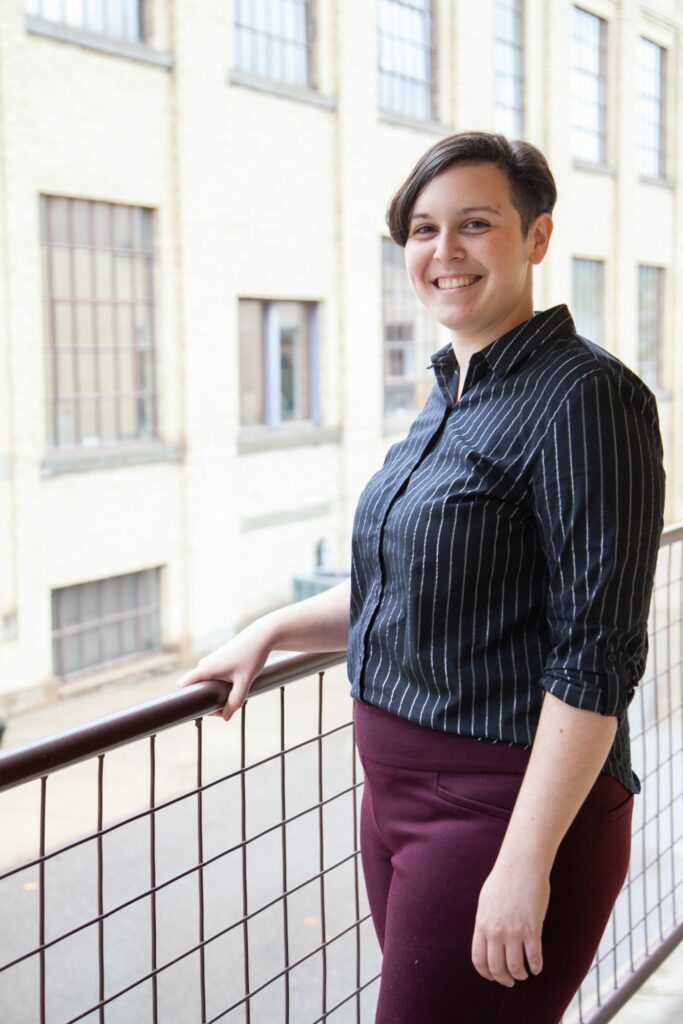The Oneupweb Guide to SEO and Gender-inclusive Marketing
Gendered words in English regularly pepper the language. Even that standard “hey, guys” Midwest greeting inherently genders everyone you’re talking to, and it’s so commonly accepted that women will say it to a group of other women, no men involved. Many instances of gendered language can be brushed off as innocuous. But it starts to become a problem when it permeates the way we write to the point of baked-in exclusion.
What Is Inclusive Writing and What Does Gender Have to Do with SEO?
Inclusive writing focuses on diversity and inclusion for minority groups, and it takes into account a range of identities and characteristics, including race, ethnicity, disability, religion, sexuality and (the focus of this guide) gender.
SEO is chock full of gendered keywords, from the obvious instances like “for men” and “for women” keywords to the more insidious ways that Google understands gendered language. In the clothing industry, adding “cute” to a search turns up women’s clothing while “cool” returns men’s results. Our understanding of gender soaks into our writing habits, reinforcing the stereotypes that are already in place. (Would you think to call a page of women’s jeans “cool” or the men’s t-shirt section “cute?”)
Why Are Diversity and Inclusion Important?
Writing inclusively is, at its base level, simply the right thing to do. Why is diversity important? Because it’s necessary to care about a wide range of people because they’re people, even when their experiences don’t match yours.
However, inclusion is also good for business. A 2020 Microsoft report on how Gen Z interacts with inclusive advertising found that 70% of their participants were more trusting of brands with diverse representation in their ads. That also translated to a 23-point lift in purchase intent for the company represented by the most inclusive ad shown.
Older Gen Z members are already coming into prominence in the market. (The upper reaches of Gen Z were born in 1997.) As the years go by, Gen Z will only increase in market importance.
And they care, not only that you’re representing them, but that you’re representing others. That 23-point hike in purchase intent occurred across communities, whether the people saw themselves represented or not. And Gen Z will skip over a brand that doesn’t match their ideals: 48% of participants reported that they stopped buying from a brand that didn’t represent their beliefs.
Inclusive writing opens the door for a wider audience. After all, when you’re not excluding people, they have a reason to listen to what you’re saying.
So how do you approach SEO with gender in mind?
Our Gender-inclusive Writing Guide: What to Consider When You Write
1. Strike a Balance
The hard part about gendered keywords is that, unless everyone decides to change all at once, there will be a steep learning curve for adopting new keyword conventions. “Cute” will still return women’s clothing results, and “gifts for men” will still be a popular holiday blog topic. Not all clients will want to participate in (or see the need for) gender-inclusive writing. The critical thing to remember is striking a balance between functional SEO and inclusive choices.
Google Webmaster Trends Analyst, John Mueller, when asked about inclusivity and gender neutrality in search, reported that Google learns based on how people write. The more inclusive language there is on the internet, the more Google will reward and recognize inclusive writing. To even the playing field and normalize diverse language in Google’s algorithmic brain, write inclusively.
2. Aim for Non-gendered Language
Sometimes, inclusive marketing means not gendering your audience at all. There are plenty of industries where there’s no point in assuming the gender of the people you’re talking to (including marketing). We don’t need to guess that the homeowner handling a plumbing issue is male or that the person attending a spa day is female. Even if statistics might back up the assumption, limiting your language to gendered terms still excludes potential customers just because they don’t match the majority. Whenever possible, use “they” as a gender-neutral pronoun and stick to neutral words like “homeowner,” “spouse,” “customer,” “user,” “technician,” “repair expert” and similar.
3. Who Are You Excluding When You Write?
SEOs are used to asking themselves, “Who am I writing for?” But it’s equally important to ask, “Who is left out when I write this way?”
Healthcare is a common culprit of gender-based exclusion, especially in “women’s health.” While most people who use these services will be women, some will be transgender men or nonbinary people. Even just acknowledging that not everyone using the service is the “expected” gender can help people feel included. Want an example? Check out footage of Baymax buying tampons: Disney thought to include a man in a transgender flag shirt or binder purchasing sanitary pads for himself.
Though it’s okay to have and write for a core audience, take a moment to acknowledge who you’ve left out. Images are a great way to acknowledge under-represented communities.
4. More Than Just Gender
Though this guide focuses on gender, no person exists in a vacuum. Gender interacts with other identities and produces extra complications.
Ethnicity and gender often overlap to create new considerations when writing. For example, publications commonly use the word “Latino/a” to describe someone of Latin American descent. However, that carries the inherent gender of the Spanish language into English. You would label a group of mixed genders with the male form of the word, and it leaves no room for nonbinary identities. In recent years, Latinx came into use as a replacement, but it’s not without its own controversies. “X” isn’t commonly used this way in Spanish, and it can be seen as forcing another culture’s norms to talk over the original language. “Latine” is growing in popularity for that reason: It’s inclusive of both LGBTQIA+ identities and the language of origin.
There’s not enough time to go into every single overlap and do them all justice, but it’s important to understand how gender overlaps with other identities to produce a whole, authentic person. Keep that in mind as you write. Are you assuming the woman in your hypothetical situation has a husband? Do you offer options for facials that can be applied around a headscarf or a private room and a female attendant so the scarf can be removed? Do you use overly aggressive, domineering or masculinizing words to describe black people (especially black women) in your writing? Read up on diverse experiences so you can recognize which blind spots you need to address, and which habits you might need to get rid of.
5. Do Your Research
…better yet, hire a diverse staff. A wide range of life experiences makes it easier to find blind spots and biases and eliminate them. Give everyone room to speak and point out inconsistencies or problems with the ways your team writes.
It’s easier for people to write experiences they’ve had, but that doesn’t mean they’re the only ones who can write diverse content. Put the time and effort into learning more about inclusion and diverse experiences, and your writing will strengthen for it.
Someone Has to Start

On every road to improvement, there have been pioneers. Someone has to take the first steps for others to follow. Luckily, the initial trail has already been blazed. Diversity and inclusion are fairly mainstream concerns, and it’s not odd to come across inclusion-focused marketing and campaigns. Now, it’s time for the deliberate application of what we know: diverse marketing works, and it’s a helpful way to make your audience feel seen.
Now that we’ve got inclusivity on your mind (and ours), we’re happy to help get you started. Chat with us about setting up the first steps. Or let us help you with a range of digital marketing services and a dedicated team who will produce inclusive content you can be proud of.
These guidelines were created by Casey McDougall, a genderqueer SEO and content marketing project manager for Oneupweb.
